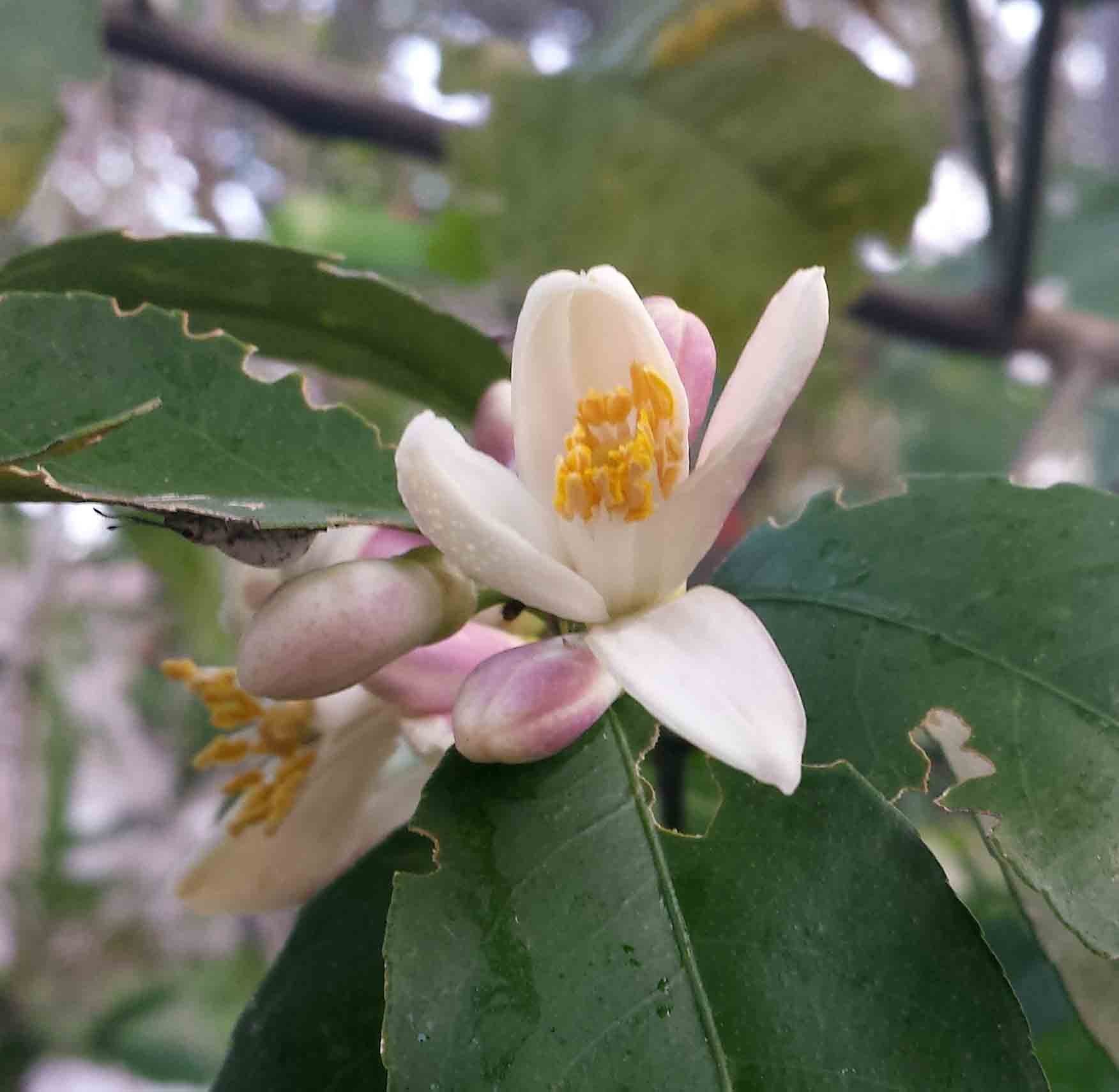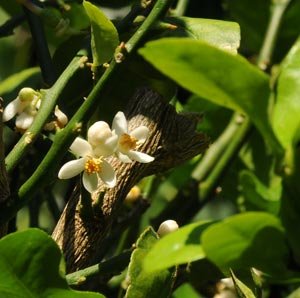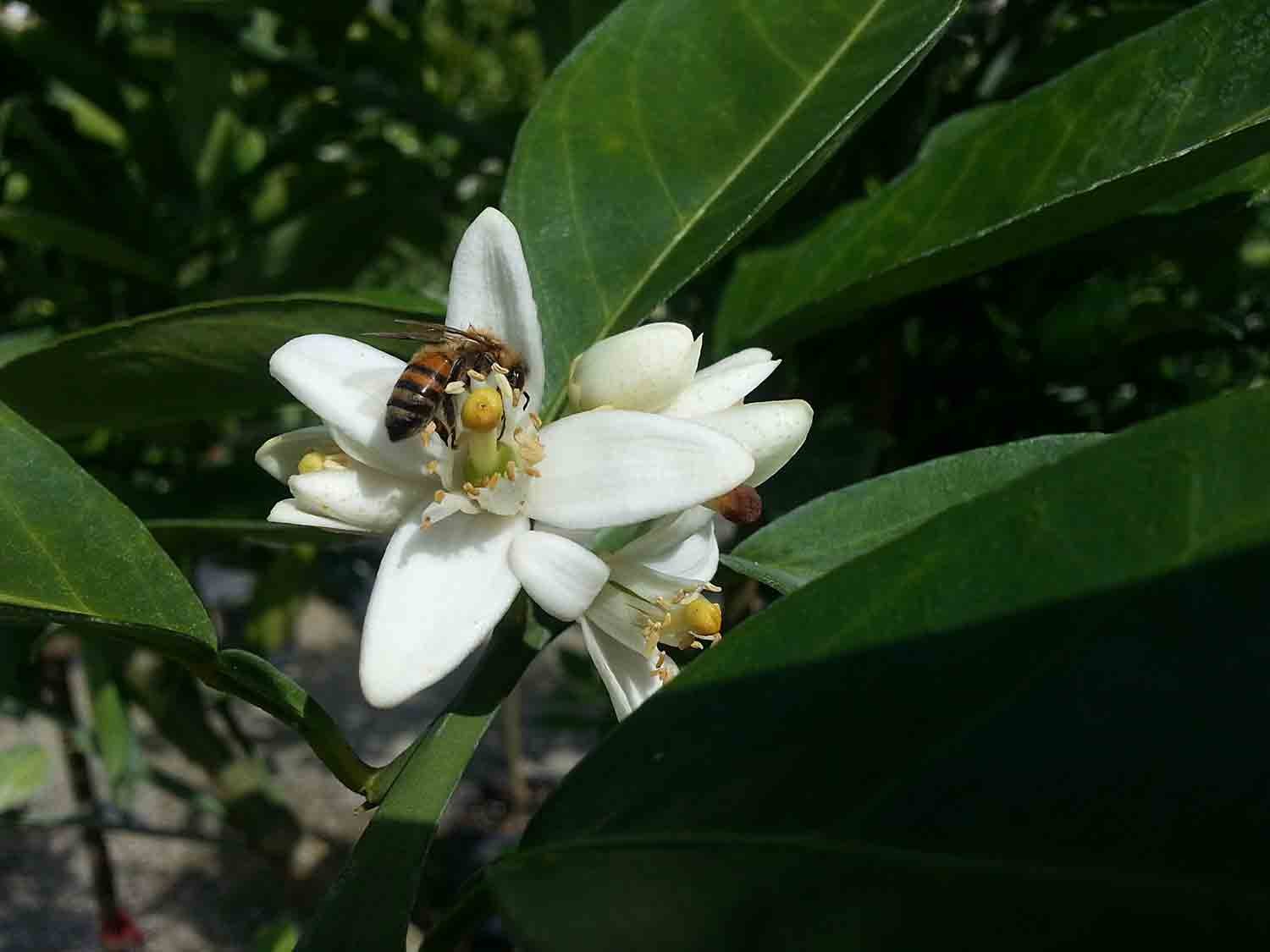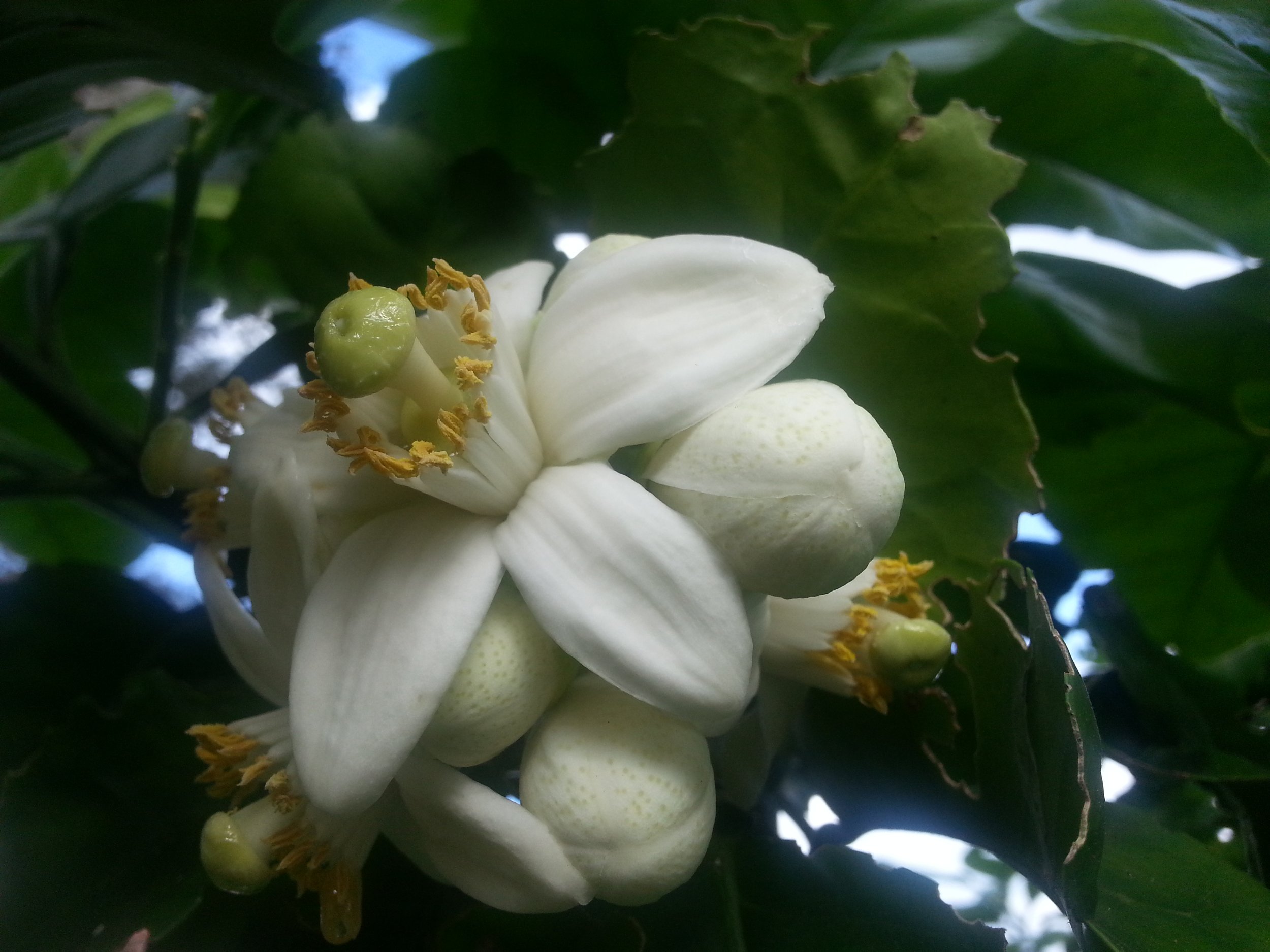Perfume Notes: Scent of Citrus Blossoms
My first citrus tree was a lime tree for a small spot in my backyard. It produced very few limes but grew in just over three years to a 20-foot-tall tree that bloomed abundantly one winter. I decided to see what kind of blossom water the flowers would produce if distilled and if, just maybe, I could get a few drops of lime ‘neroli’.
Fragrant Orange Blossom with Leaves and Water Droplets
Neroli oil is one of the most sought-after and popular essential oils in perfumery and many classic perfumes use this scent. It comes from the blossoms of the sour or bitter orange tree with the finest oils coming from a specific variety called amarna or Bouquet de Fleurs’. To my nose neroli is floral but not sweet with a strong green fresh note, very refreshing and uplifting. Neroli is one of the few distilled floral essences and is gathered by hand to be distilled in water rather than steam. The blossoms are delicate and do not hold up to solvent extraction and, even for distillation, must be suspended in water so the flowers are not packed in and bruised. For my lime blossom distillation, I laid a couple of sheets under the tree, picked some blossoms by hand, pruned the tall leggy stems back and plucked blossoms off those and then shook the tree to try and get the last few flowers. I used just opened or nearly opened blooms along with a few very tiny limes.
I did, indeed, get a tiny amount of essential oil—just enough to dampen the end of a scent strip. Most of us know that linalool is one of the sweet, floral chemicals that contributes to the scent of a variety of flowers and herbs, including neroli. A lesser-known chemical is myrcene, present as alpha or beta types, that is attractive to bees. Methyl-anthranilate provides a characteristic orange blossom scent but also smells strongly like grape soda. It is a bird repellent that causes temporary pain in nerve receptors when birds taste it and can be sprayed on crops to discourage bird damage. One more important compound, a small percentage out of many, that contributes to the scent of orange blossoms is indole – fecal in nature but surprisingly floral in very small doses.
So, how did my lime blossom oil compare to orange blossom neroli? I definitely got a neroli sense to it but also a very fresh scent of lime that is quite uplifting and slightly sharp. How does research classify lime blossom essential oil? A very interesting study from the University of Florida’s Citrus Research and Education Center by Jabalpurwala and colleagues (2009) compared head-space volatiles from 15 different citrus cultivars. Head space analysis is a method of placing the blossoms within a ‘trap’ that captures the scent molecules in tiny amounts as they are released from the flowers. A complicated analysis quantified the relative amount of 70 aromatic compounds, some detected in citrus blossoms for the first time. A grouping of citrus blossom types and their aromatic compounds clusters mandarin, lemon/lime and pummelo in three separate clusters. True neroli blossoms have a scent that falls in the middle of a line between pummelo and mandarins but closer to pummelo and quite far from lemon/lime. Both pummelo and sour orange flowers have linalool and myrcene compounds as well as methyl anthranilate. Each also has a small amount of indole. Lemon and lime blossoms have a small amount of linalool as do mandarins but have higher levels of limonene that provides a characteristic lemony scent. Or the fresh, sharp scent that I perceive in my distillation.




